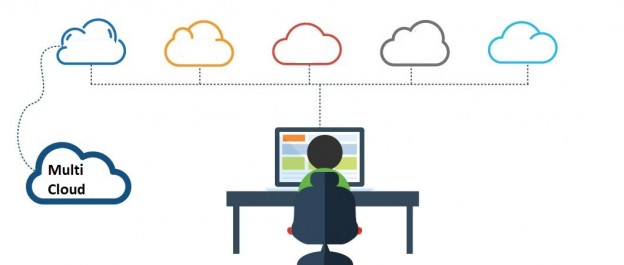Cloud is the right platform to take your business to the next level. Your organization can experience freedom from complexities of running on-site IT infrastructure. Cloud migration also helps save considerable expenditure by eliminating the need to hire software experts to look after day-to-day management of on-premise equipment.
Importance of a Cloud Vendor
Cloud vendors are primarily responsible for migrating and running enterprise workloads in cloud. Clients of cloud services must develop ability of assessing the cloud services to understand whether the cloud vendor has helped them meet objectives of cloud adoption or not. This can be accomplished by checking whether the services have been offered to fulfill all requirements without compromising compliance, performance, cost efficiency and security.
If you have chosen a right cloud vendor with proven experience and professional approach, then you should not be concerned about smooth functioning of cloud systems. Major providers of cloud services make sure that the customers are offered bespoke cloud solutions with optimized costs.
The three cloud hosting service providers that can be relied upon are Microsoft, Amazon Web Services, and Google. Ideally, each vendor has potential to satisfy a wide range of infrastructure related concerns, thanks to a great number of cloud solutions offered to customers from all industry verticals.
Whenever an organization adopts a multi-cloud strategy, it chooses multiple vendors of cloud services for running different types of workloads by leveraging separate platforms. The approach of using multiple cloud vendors can also be adopted in order to assign different tasks to more than on cloud provider.
Availability of multiple options empowers the organization with enhanced capability of delegating tasks based on volumes.
There are many reasons for adoption of a multi-cloud approach that involves more than one cloud vendor to fulfill objectives of workloads in a particular organization. This approach satisfies need for multiple choices to satisfy infrastructure issues and other service related objectives.
Having a second or even a third cloud vendor to work for organization’s best interests facilitates adoption of a variety of components. The choice would obviously depend upon availability of IT budget, level of scalability, and flexibility of packages by in a particular cloud infrastructure.
Multi tiered cloud system can be a right answer to address need for a second service provider for managing cloud systems. This approach eliminates the need for a different cloud vendor as the existing hosting service provider has become an integrated part of the infrastructure.
The unique provision for a port to get connected with other cloud vendors is an ideal way to keep cloud options open without abandoning services of the current vendor for cloud solutions. Such an arrangement also assures freedom from being locked-in with the same vendors against the wishes and policies of the organization.
Benefits of Multi-Cloud Adoption
Multi-cloud deployment offers many benefits that can be understood in different contexts. You can fulfill objectives of running different applications or assigning roles that may belong to different categories to more clouds than one.
A single cloud approach is generally suitable for managing huge volumes of a typical workload. However, this cannot satisfy objectives of optimization when it comes to dealing with different workloads. It is a common practice in many companies to assign sales and marketing to one cloud vendor while the internal data management is looked after by the second service provider.
If you suddenly come to know that your enterprise has crossed threshold of cost efficiency in an existing cloud platform, then selection of another cloud vendor becomes a necessity.
Multiple cloud vendors improve cloud operations by offering more choices for scalability and also reinforce flexibility of operations for all stake holders including developers. Maintainability of cloud platforms can be simpler in a multi-cloud environment that provides a broad choice to leverage more and more options such as on-demand solutions.
In Conclusion
The model of multi-cloud hosting can add to redundancy of platforms while the organization is benefitted with availability of various platforms for distribution or storage of digital assets. This approach is also an essential consideration from the security point of view. Availability of several cloud platforms for different workloads also mitigates DDoS by unleashing resources from the fear of Single Point of Failure.






 Live Chat
Live Chat
